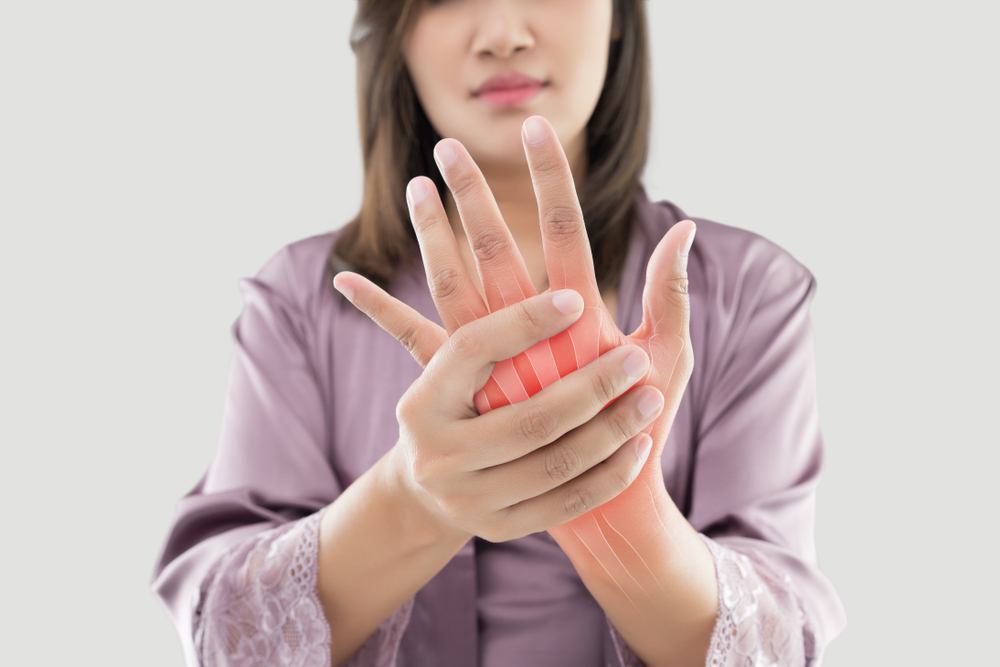
Osteoarthritis: 4 reasons why it is more likely to attract women
Osteoarthritis discriminates against gender. It has more love for women. Some reports suggest that more than twice the number of women have arthritis compared to men. In women, symptoms of osteoarthritis typically start appearing in the 40s and 50s. The gender disparity of osteoarthritis further increases after 55 years when women reach menopause.
The unique challenge of osteoarthritis that a woman faces is not only limited to its occurrence. A woman with arthritis experiences worse pain and aches in different joints. Also, a woman is more prone to rheumatoid arthritis, the most severe form of the condition.
Does Arthritis affect only old-aged women?
A common misconception about arthritis is that it is a disease of old age. According to Arthritis Foundation in the US, the average onset of rheumatic arthritis. (the most debilitating form of arthritis) is between 30 to 60 years old. Children can also get arthritis.
Why is osteoarthritis more common in women?
When women get arthritis, it hurts more. Women with arthritis often come up with higher pain scores than males. Also, after 55 years, more women get arthritis compared to men. Although, we can’t put fingers on one cause, but the following are the probable causes of more osteoarthritis incidents in women:
-
Anatomy
When we are comparing genders, there is a difference in the affected joins as well. Men get arthritis more in the hip joints, while women do in their knees and hands. The reason lies in the anatomical structure of the women.
A tendon in a woman shows a higher degree of movement to get acclimatized to childbirth. It makes the tendons more elastic and more prone to injury. The wider hips in women affect the alignment of hips, making the knees more prone to injuries and arthritis.
-
Effect of female hormones on bones
Hormones play a significant role in arthritis. Estrogen (a female sex hormone) keeps inflammation in check. That is why the risk of arthritis is less in younger females. One study suggested that women experience fewer joint symptoms during pregnancy and post-ovulation during the menstrual cycles. During these times, the level of estrogen and progesterone are higher. After menopause, the estrogen level plummets, causing an increased incidence of arthritis. The body level of these hormones changes during various stages of a woman's life:
- Pregnancy
- Breastfeeding
- Postpartum
- Menopause
- Polycystic Ovary Syndrome
- Endometriosis
- Hormonal Medications
- Contraceptives
Researchers are currently working on carving a relationship between arthritis, estrogen, the age of puberty, childbearing, menopause, and the use of hormone replacement therapy.
-
Obesity or excessive body weight
The chances of arthritis significantly increase with obesity. Women are more prone to excessive body weight than men.
If you are overweight, your knee joints are under pressure.
One gram of body weight exerts three additional grams of pressure on each of your knee joints. Excess weight may erode cartilage and thus raise the risk of arthritis.
-
Genetic Predisposition
If you have arthritis, it may be the fault of your genes. A family history of arthritis may increase the chances of you getting arthritis. For a woman, if her mother has arthritis, the chances of getting arthritis are even more. She may get arthritis in the same joints at the same age.
So how can a woman protect herself from arthritis?
-
Maintain healthy body weight:
With every pound you lose, the stress on your joints significantly decreases. Eat a healthy diet and replace carbohydrates with fruits, whole grains, and vegetables.
-
Get rid of your high heels:
Women love high heels. But the human body favors walking on soles rather than toes. Occasionally you can wear them, but if you adore them all day, it will create joint problems in the long run.
-
Non-impact exercises:
High-impact exercise may put a lot of stress on your joints and can erode cartilage faster. Avoid running. You can replace it with swimming or cycling.
-
Be careful about body mechanics:
People with poor body mechanics are more prone to develop joint problems. During lifting weights, try to put more pressure on your legs rather than your back. It will take most of the stress off the joints and thus slow down the wear and tear of the cartilage. Simple hacks like carrying your purse on the forearm rather than gripping the straps can make a lot of difference.
-
Avoid injuries:
Taking steps for a better tomorrow is the bulletproof plan for achieving a healthy future. Our bone health is no exception. Take every possible measure to avoid injuries. If your exercise is causing pain in your joints, it may not be the correct exercise for you. It is always better to understand your limits. Try to focus on something challenging but safe. Do not lift people or objects heavier than your body weight. There is no harm in creating an exercise regimen for your body under the guidance of an expert.
-
Keep your vitamin D levels tight:
According to the National Institute of Health, most women, especially those of menopausal age, lack vitamin D. Vitamin D deficiency can make you prone to arthritis. But be careful that excessive vitamin D levels may also cause problems. So always talk to your doctor before taking the supplements.
-
Stay hydrated:
Our joint cartilage mainly contains water. The water makes it flexible and gives it cushioning power. Dehydration makes your joints more susceptible to injury. Even in patients with arthritis, dehydration may cause severe joint pain. A daily 1.5 to 2 liters of water can keep your joints healthy.
The Conclusion
Arthritis does discriminate gender affecting females more than males. Though the exact cause of arthritis is still unknown, the anatomical, physiological, and genetic makeup in females makes them more susceptible to this condition. A healthy lifestyle and balanced diet can be your biggest bet to keep this disease at bay.






